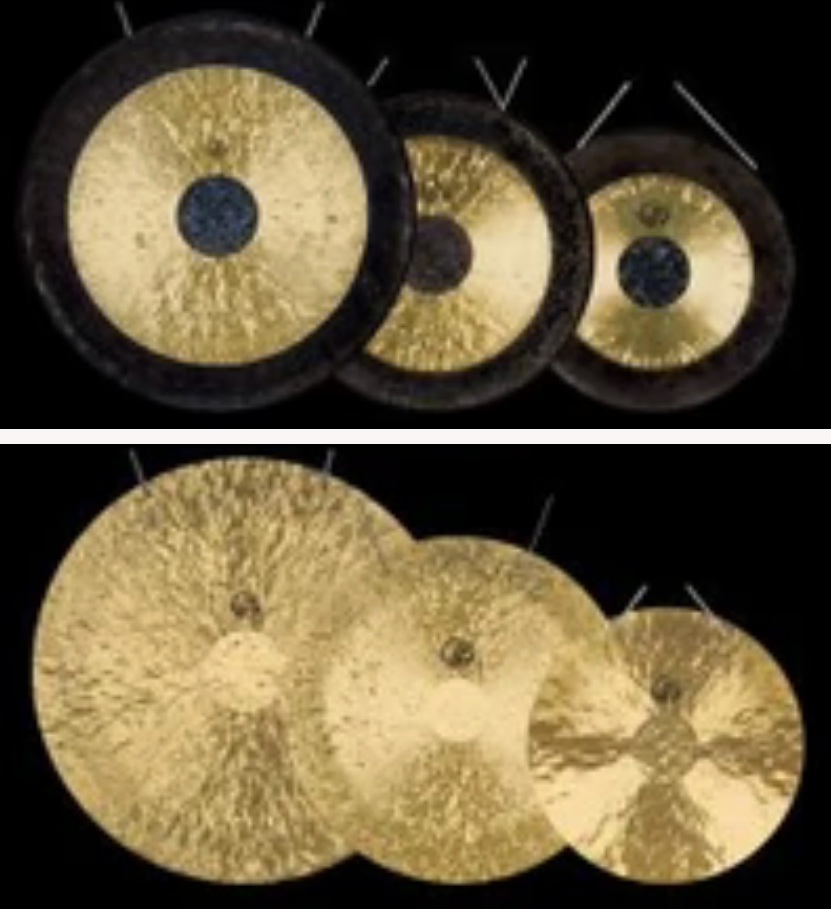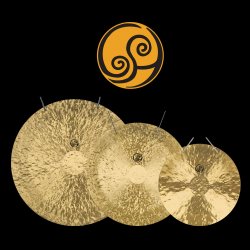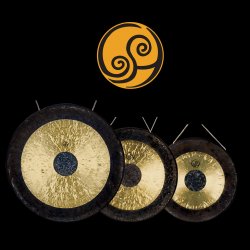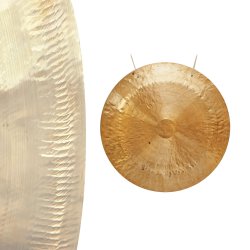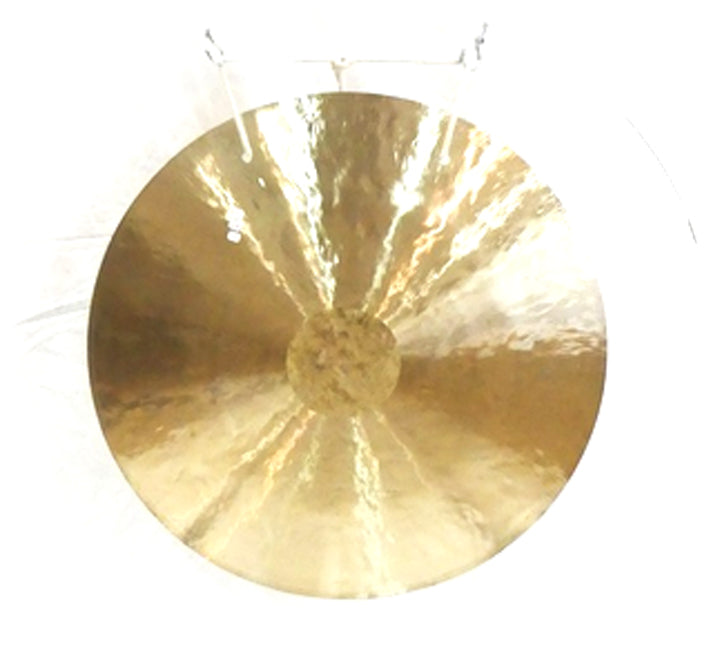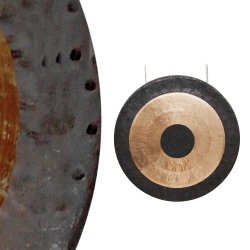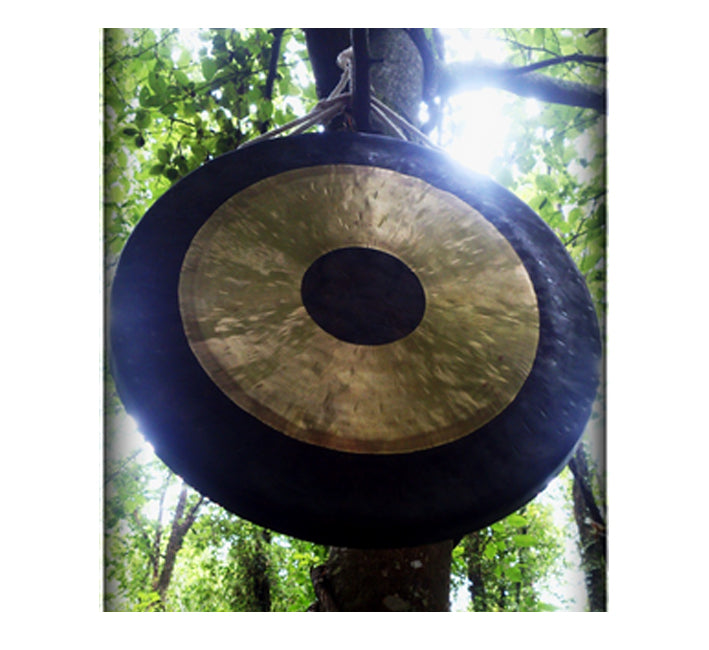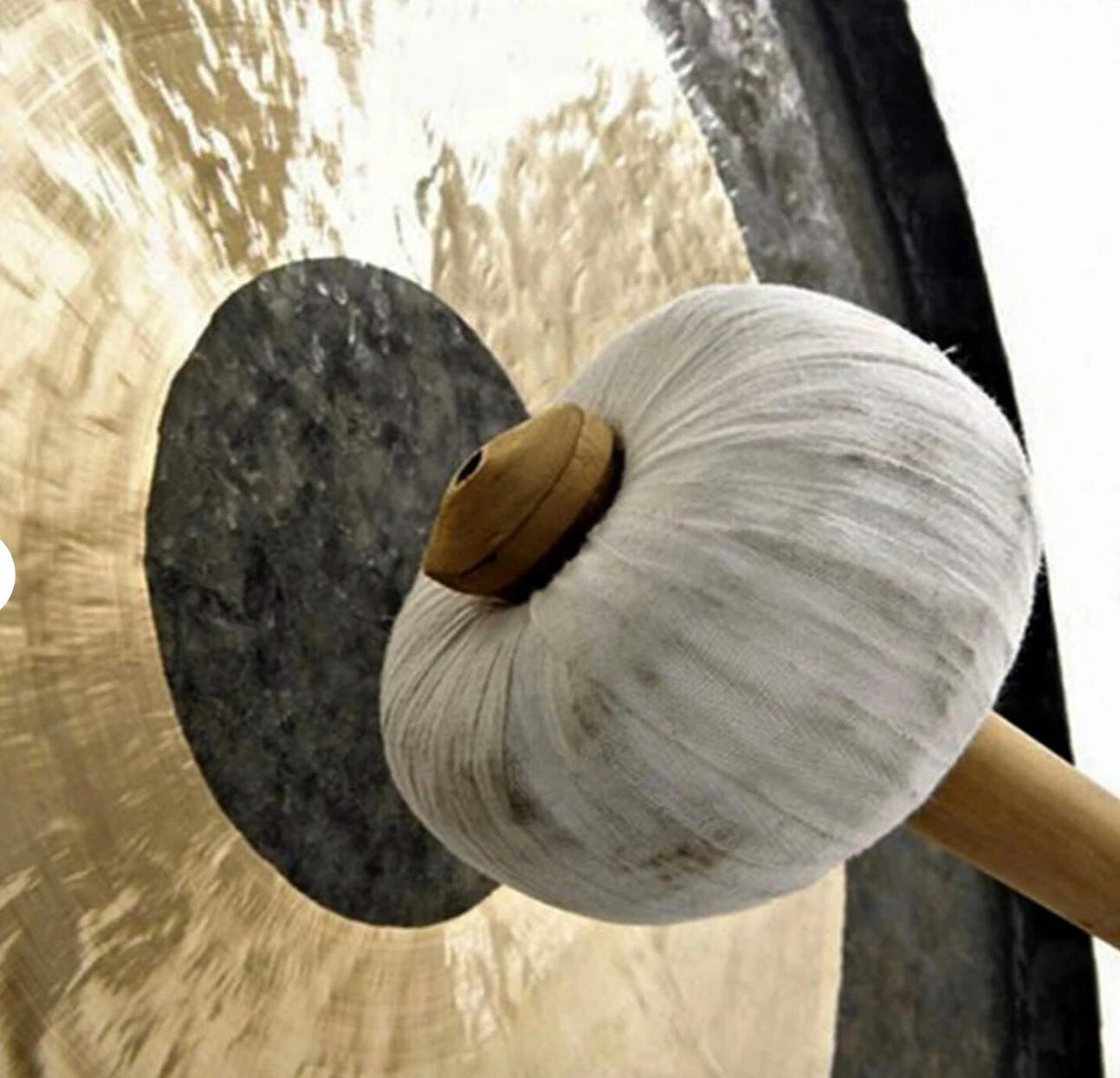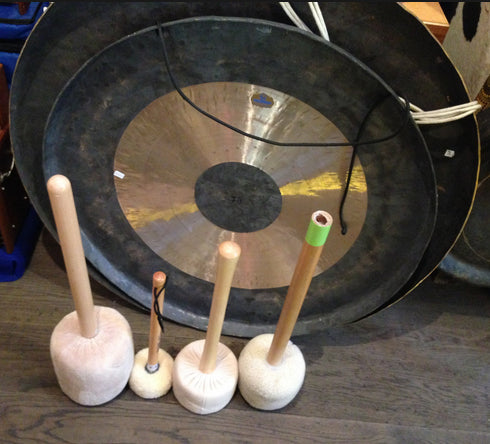Gong selection, 2 families to choose from: 'Chao Gong' from Ø 30 to 90 cm and 'Wind Gong' from Ø 30 to 80 cm. Sold with mallet, perfect!
Gong selection, 2 families to choose from: 'Chao Gong' from Ø 30 to 90 cm and 'Wind Gong' from Ø 30 to 80 cm. Sold with mallet, perfect!
Couldn't load pickup availability
- Weight and dimensions of the Gong: There may be + or - a few grams depending on arrivals,
CHAO GONG:
- 30 centimeters / 0.900 kilograms
- 50 centimeters / 3.5 kilograms
- 60 centimeters / 5.25 kilograms
- 70 centimeters / 8.5 kilograms
- 80 centimeters / 10.50 kilograms
- 90 centimeters / 15.50 kilograms
WIND GONG/ “Healing series”:
- 30 centimeters / 0.900 kilograms
- 50 centimeters / 2,200 kilograms
- 60 centimeters / 4,250 kilograms
- 70 centimeters / 4,720 kilograms
- 80 centimeters / 6,890 kilograms
Smaller sizes and weights have a higher pitch due to their thickness and small diameter. Larger ones will tend toward mid and bass sounds.
The wind gong is a traditional Chinese percussion instrument. It is also very popular in the West.
The gong beater is included free of charge.
We also recommend ordering a gong bag for safe storage and transportation.
Wind gong
Wind gongs are flat bronze discs with a low fundamental pitch, well-tuned harmonics, and long sustain. They are made of electrolytic copper and tin. Traditionally, a wind gong is played with a large, soft mallet, which gives it a roaring crash befitting its namesake.
The Chao Gong is the most famous of our Chinese percussion instruments. Many Westerners appreciate the Chao Gong and the Chinese Windgong.
The Chao Gong is made of electrolytic copper and tin. It is almost flat except for the outer edge, which curves inward to create a kind of cylinder. In a 25 cm gong, for example, the edge extends for about 1.5 cm perpendicular to the surface. The entire surface of the gong is slightly concave when viewed from the edge. The center of the gong and the edge remain covered with the black layer of copper oxide that forms during the instrument's manufacture. The rest of the gong, however, is cleaned of this layer.
The earliest evidence of Chao Gong dates back to the discovery of a tomb at the Guixian site in the Guangxi Zhuang Autonomous Region of China. It dates back to the early Western Han Dynasty, famous for the use of percussion in tribal gatherings and rituals.
Traditionally, the Chao Gong was used to clear roads during important functions and processions, much like police sirens today. Sometimes, the number of blasts on the gong indicated the importance of the authority. This way, if two authorities happened to meet on the same road, they knew who should bow to the other first.
Note: These gongs may have small 'blisters' on their surface, this cannot be 100% avoided for handmade gongs. This is a normal phenomenon, it is not a hole or dent, it is a bubble of molten copper and does not affect the gong's sound or lifespan.
Share
